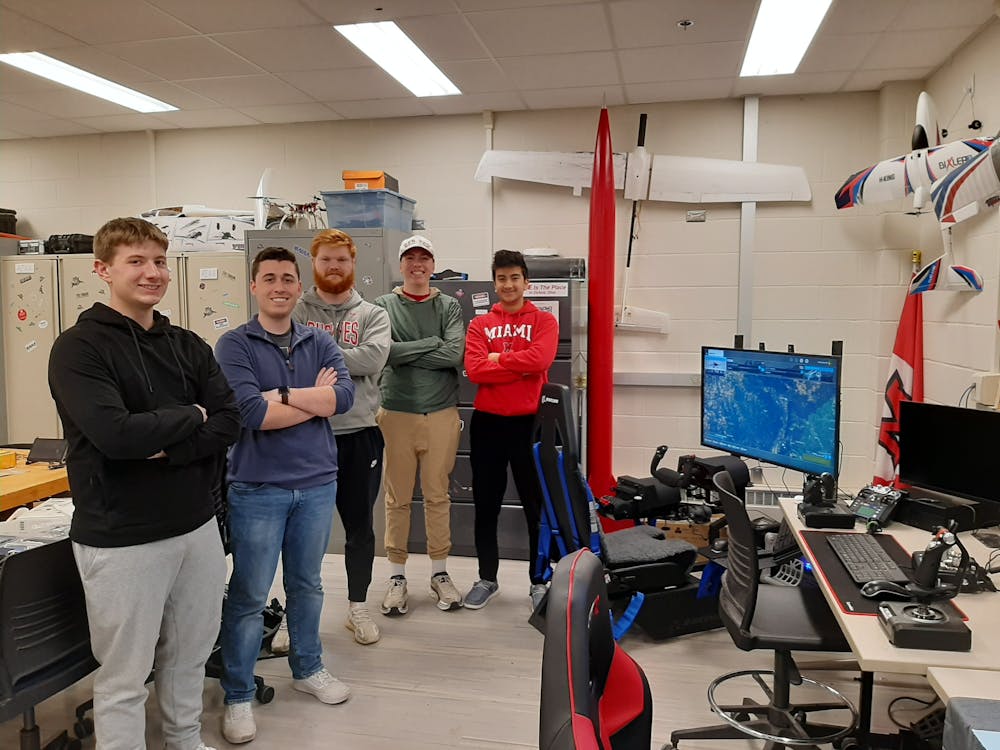After the lofty goals of Miami’s branch of the American Institute of Aeronautics and Astronautics (AIAA) brought the organization back to Earth, this semester they are planning for a relaunch.
The biggest challenge facing the organization is budgetary issues, which led them to forgo the Spaceport America competition in November 2023, one of the most highly publicized rocketry events in America.
“The club just wasn’t really able to support the budget for a $25,000 plane trip to New Mexico,” Sawyer Martini, president of Miami’s AIAA, said.
The cost to launch the hefty competition rocket (Project Aurora) was also a major concern.
“At $750 a launch, with multiple test launches needed as well, the costs became unmanageable for our club as it currently is,” Martini said.
The members of AIAA have decided to plan “a more logical growth path” for the organization this semester. As part of this, MURPL, the astronautics-focused section of AIAA, has shifted its current competitive focus from the Spaceport America cup to a more local competition called the Battle of the Rockets, located in Virginia.
“Besides that we just can drive to the competition, the rocket engine we need is an Estes-G type engine, which is a $50 motor with lower fuel costs than the one for Project Aurora,” Martini said.
A new rocket has also been constructed for the competition in April as well.
“Our current submission this year is the Compact High-velocity Universal Booster, or Project CHUB, a short and wide rocket most ideal for what we are trying to do,” Nathan Bonney, MURPL’s team captain, said.
Larry Butkus, the faculty adviser for the club, has helped guide the organization through their budgetary issues.
“As the faculty advisor, some things I’ve done are help them to revise the club constitution, as well as have official oversight over their budget,” Butkus said. “We also go over what’s been happening in the club, and we always end up talking about the two major activities of the club—one being a rocket competition, and the other being an aircraft competition called Design Build Fly (DBF).”
The return of the Design Build Fly competition to Miami’s AIAA is the result of the club giving more focus to the aeronautics portion of its name, with an internal section called MUDBF working on the logistics.
Enjoy what you're reading?
Signup for our newsletter
“[MUDBF] is currently doing hobby work like planes, drones; they build actual functional small-scale planes,” Cody Sexton, AIAA’s secretary, said.
MUDBF is also just as competition-focused as the rest of AIAA.
“Next fall, we plan to send about eight individuals to see the DBF competition and train them on what they should expect,” Martini said.
As a final view of the new goals of AIAA, Martini concluded that the club had been tested on what they wanted to do and what the club could actually support. Despite that, he maintains confidence in the club’s ability to perform.
“If you are interested in what you do, you will be interesting to be around,” Martini said.




